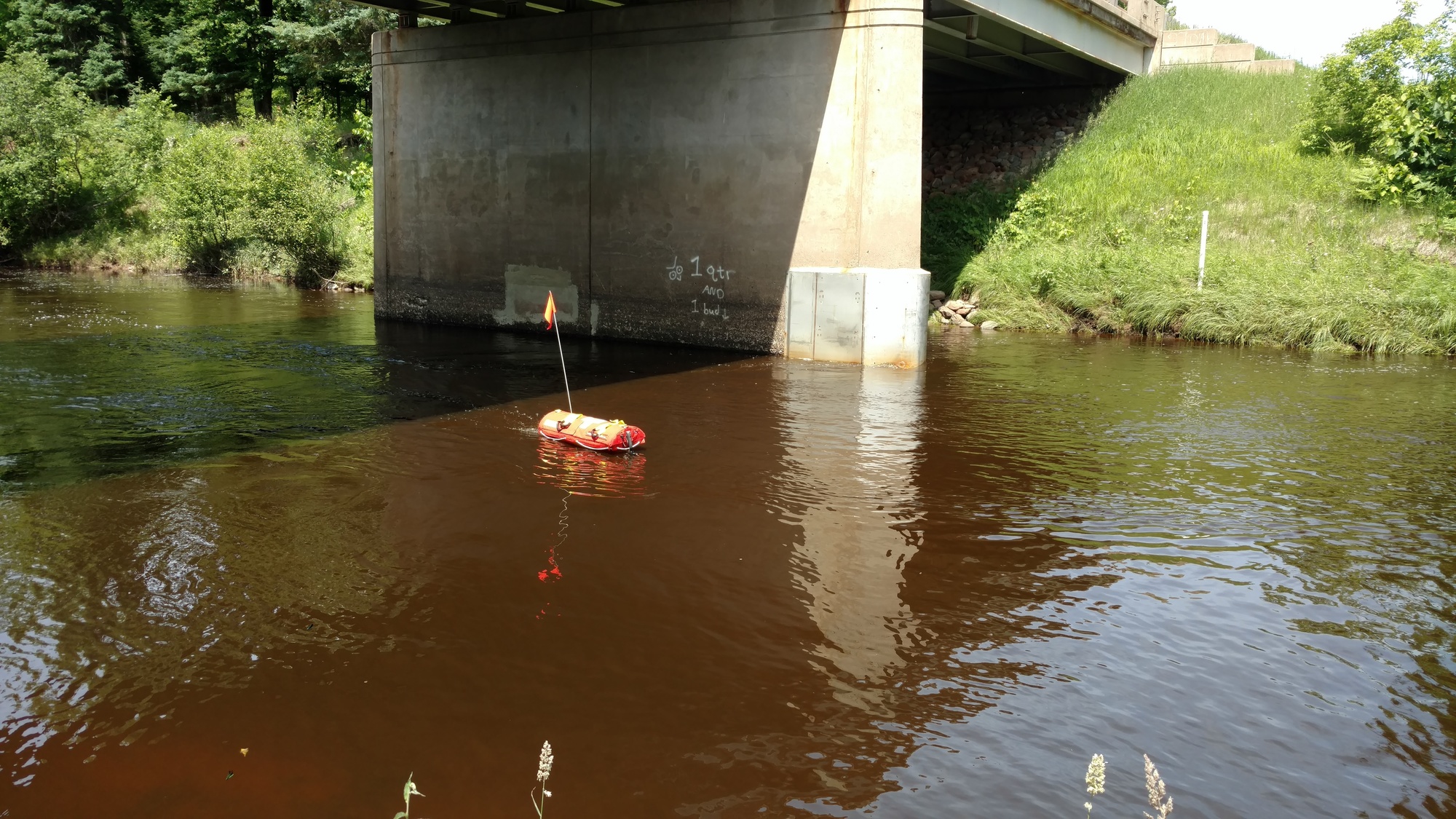Bridge inspections with drone boats an infrastructure "Gamechanger"
Michigan DOT sent this bulletin at 03/15/2021 12:13 PM EDT

|
|
Having trouble viewing this email? View it as a Web page. |
FOR IMMEDIATE RELEASE MONDAY, MARCH 15, 2020
CONTACT: Dan Weingarten, MDOT Office of Communications, 906-250-4809
WeingartenD@Michigan.gov
Bridge inspections with drone boats
an infrastructure "Gamechanger"
Fast facts:
- The American Society of Civil Engineers (ASCE) recently named the Michigan Department of Transportation's (MDOT) use of unmanned remote-controlled boats for bridge inspection to the group's list of ''2021 Infrastructure Gamechangers.''
- Sonar EMILY is a remote-piloted boat that MDOT has been using to combat bridge scour, the degradation of the streambed around bridge abutments due to water currents.
- Unmanned surface vehicles can be much safer and less labor-intensive than traditional bridge inspection methods.
March 15, 2021 -- It's a big recognition for a little boat. The American Society of Civil Engineers (ASCE) recently named the Michigan Department of Transportation's (MDOT) use of unmanned remote-controlled boats for bridge inspection to the group's list of ''Infrastructure Gamechangers'' for 2021. ASCE combed through successful infrastructure solutions across the country to identify 13 of the most innovative examples.
Sonar EMILY (EMergency Integrated LanYard) is a remote-piloted boat that MDOT has been using to combat bridge scour, the degradation of the streambed around bridge abutments due to water currents. Scour is a leading cause of bridge failure.
After a 2016 study, MDOT has deployed EMILY units in the field to measure bridge scour and inspect bridges and culverts where access is limited. Results showed it could be safer, less labor-intensive and, in some cases, less costly than traditional techniques.
A powerful, durable, maneuverable water-jet-powered device, EMILY is about 4 1/2 feet long, 2 feet wide and a foot tall. It can be equipped with sonar to allow inspectors to take depth measurements and a topside camera to view the underside of bridges.
During the unprecedented flood event that struck Michigan in May 2020, MDOT used EMILY to help perform preliminary inspections of bridges across the area.
Midland, Gladwin, Saginaw, Arenac, and Iosco counties were declared disaster areas after several days of heavy rain and multiple dam failures. At its peak, more than 20 state trunkline and local bridges were impacted by flooding, resulting in immediate closures to protect the motoring public. More than 10,000 households were evacuated in Midland County over a 24-hour period.
MDOT focused emergency repair efforts on freeways carrying the highest traffic volumes, working to restore mobility to impacted communities as quickly and safely as possible. EMILY played a role in the rapid response.
''Even while water levels were still on the rise in the flooded areas, we were able to get EMILY in the water to determine if scour was getting worse in some locations,'' said MDOT Bay Region Bridge Engineer Paul Schiefer. ''After water levels stabilized, we were able to use the system again to confirm again that there were no scour issues that needed to be addressed before opening a bridge to traffic.''
Some flooded structures were so badly damaged, repairs took nearly a year. Through the flood and the aftermath, EMILY helped cut inspection time - and risk.
''EMILY is a great asset for MDOT,'' Schiefer said. ''During the flood response, it allowed us to monitor bridge conditions without putting a diver in a potentially dangerous situation.''
With four units strategically positioned around the state, MDOT is ready to deploy the EMILY system for both extreme high-water events and routine bridge inspections. In addition, the agency plans to use the technology for other applications as appropriate: getting images of bridge substructure below water, viewing the underside of bridges, inspecting hard-to-see culverts, and documenting bridge performance.
MDOT's drone boat use and the other projects on the Gamechangers list are a sample of industry innovations that can help address the nationwide challenges outlined in the ASCE's recent 2021 Report Card for America's Infrastructure. The Report Card assessed 17 categories of infrastructure and assigned a grade of C-, a modest improvement from the D+ given in 2017.
For more information on ASCE's Infrastructure Gamechangers go to https://www.infrastructurereportcard.org/solutions/gamechangers/.
ASCE, founded in 1852, is the country's oldest national engineering organization. It represents more than 150,000 civil engineers in private practice, government, industry, and academia who are dedicated to advancing the science and profession of civil engineering.
###
Protect workers. Protect drivers. Safe work zones for all.
www.Michigan.gov/WorkZoneSafety
www.twitter.com/MDOT_UP | www.facebook.com/MichiganDOT | www.youtube.com/MichiganDOT

A remote-controlled boat equipped with a sonar unit can maneuver around bridge piers and abutments during a high-water event for safer, more efficient inspections. (MDOT photo)

MDOT has deployed four Sonar EMILY (EMergency Integrated LanYard) units for use around Michigan in bridge scour inspections. Unmanned surface vehicles (USVs) like these promise efficient, safe, and cost-effective inspections during high-water events. (MDOT photo)

An example of the kind of imagery acquired by a Sonar EMILY boat. Inspectors can use the images to monitor the streambed around bridge piers. (MDOT photo)
An MDOT research spotlight video on using unmanned boats in use for bridge inspection is at https://www.youtube.com/watch?v=bJnrMVSzKqs.
